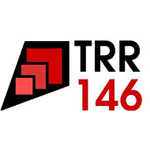
Seminar über Theorie der kondensierten Materie / TRR146 Seminar
Dec. 6, 2005 at
1:15 p.m.
in
Newton-Raum (01-122, Bau 2.413)
F. Schmid
friederike.schmid@uni-mainz.de
P. Virnau
virnau@uni-mainz.de
L. Stelzl
lstelzl@uni-mainz.de
Localization Transition of the 3D Lorentz Model and Continuum Percolation
Dr. Felix Höfling (Hahn-Meitner-Institut, Berlin)
The Lorentz model has served as a paradigm for transport in disordered media. Its simplest variant describes a structureless test particle moving through a random array of identical obstacles. The latter interact with the test particle via a hard-sphere repulsion. At high obstacle densities, the model exhibits a localization transition, i. e., above a critical density, the particle is always trapped by the obstacles.
It has been conjected that the dynamics close to the critical density can be mapped to the transport properties of contiunuum percolation (“Swiss cheese model”). The fractal nature of the void space between the overlapping spheres in the Lorentz model suggested to use a description in terms of an equivalent random resistor network model characterized by a power law distribution of the conductances.
Hence, the physics is dominated by the narrow gaps the particle has to squeeze through.
I will present an extensive Molecular Dynamics simulation and provide the first unambiguous evidence for an intimate connection between the Lorentz model and continuum percolation, an excellent matching of both the critical density and exponents is obtained. The quality of our data, however, allows to go beyond determining critical exponents, and to give a full analysis of the dynamic scaling properties. I will demonstrate the validity of a generalized dynamic scaling theory for the van Hove self-correlation function employing two divergent length scales. The presence of these two length scales manifests itself in a divergence for the non-Gaussian parameter close to the transition. Although good overall agreement is found, I will demonstrate the necessity to include the leading-order corrections to scaling. Correspondingly, the dynamic scaling hypothesis is extended by an irrelevant scaling field leading to a considerable improvement of data collapse.